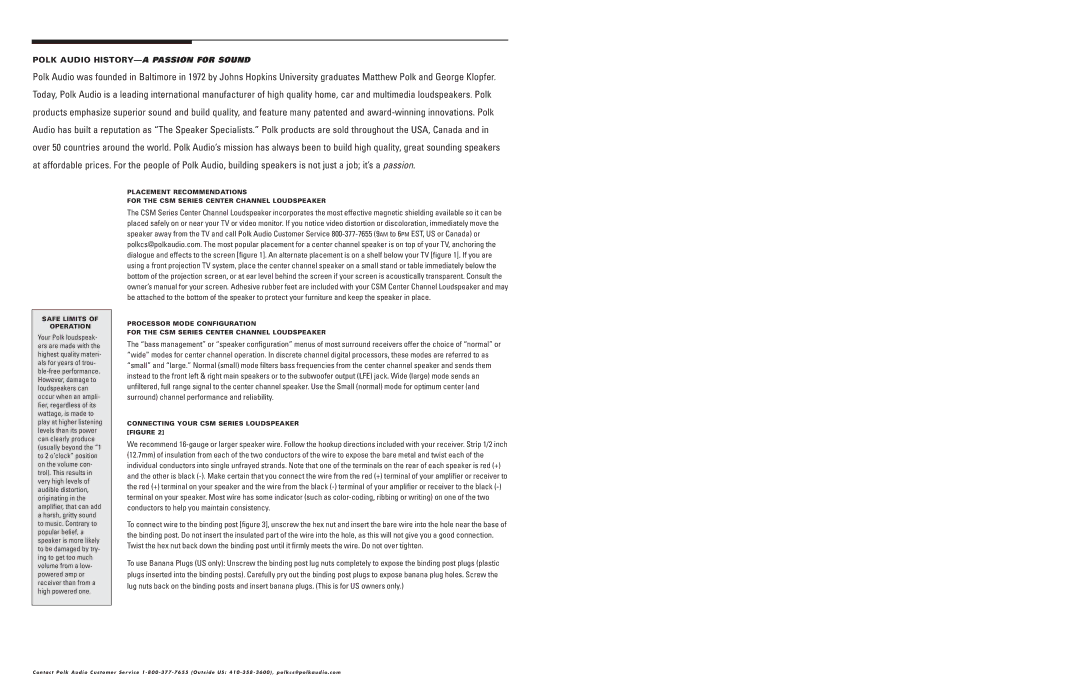CSM specifications
Polk Audio CSM is a standout choice for audiophiles and casual listeners alike, offering an exceptional audio experience that caters to a variety of listening preferences. This compact speaker, known for its versatility and performance, serves well in both home theater systems and as part of a stereo setup.One of the key features of the Polk Audio CSM is its high sensitivity rating, which allows it to produce a robust sound output even with lower-powered amplifiers. This makes it an ideal choice for home theater enthusiasts who want to enjoy dynamic sound without requiring an elaborate setup. The CSM is equipped with a 5.25-inch Dynamic Balance woofer, which provides deep and rich bass while maintaining clarity in midrange frequencies. Complementing the woofer is a 0.75-inch silk dome tweeter that delivers crisp high frequencies, ensuring that music, dialogue, and sound effects are reproduced with remarkable detail.
Polk Audio utilizes innovative technologies in the CSM, such as the Dynamic Balance technology, which is designed to minimize distortion and enhance sound quality. This technology is fundamental to providing an immersive audio experience, as it enables the speaker to produce sound across a wide frequency range without muddiness or harshness. Additionally, the CSM features a ported design that enhances low-frequency response, allowing for an extended bass range that enriches the overall listening experience.
The build quality of the Polk Audio CSM is another aspect that stands out. It boasts a sturdy construction with a sleek design, making it an attractive addition to any living space. The speaker is available in a classic black wood grain finish that blends seamlessly with various decors. It also has versatile placement options, as it can be mounted on a wall or placed on a shelf, providing flexibility in home audio setups.
Furthermore, the CSM incorporates a rear-firing port, which aids in the enhanced bass response while also allowing for placement close to walls without compromising sound quality. Its 8-ohm impedance makes it compatible with a wide range of amplifiers and receivers, making it a practical choice for any audio system.
In conclusion, the Polk Audio CSM is a high-performance speaker that combines quality craftsmanship with advanced audio technology. Its impressive sound reproduction capabilities, sleek design, and adaptability make it an excellent choice for anyone looking to elevate their audio experience. Whether used in a home theater or stereo setup, the Polk Audio CSM is sure to impress with its dynamic range and clarity.

